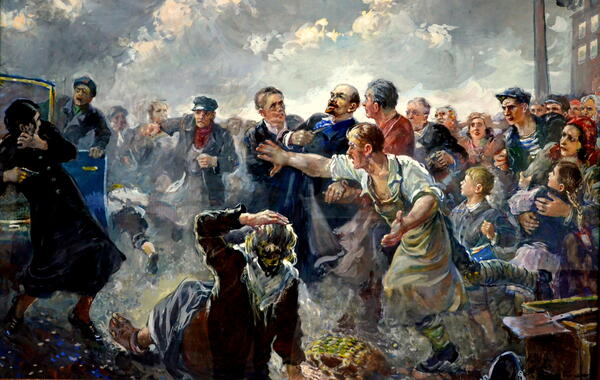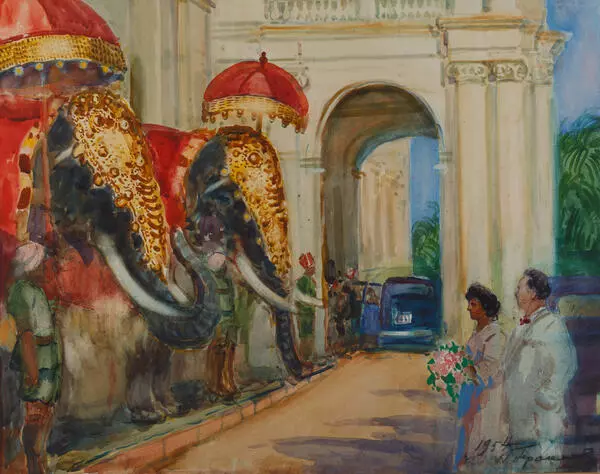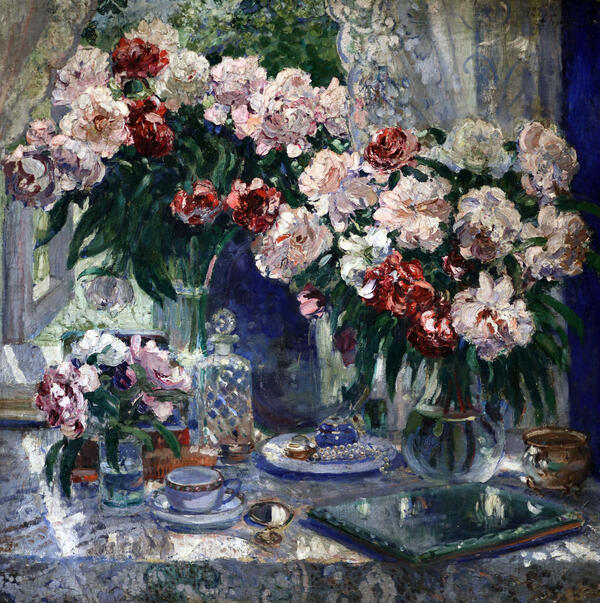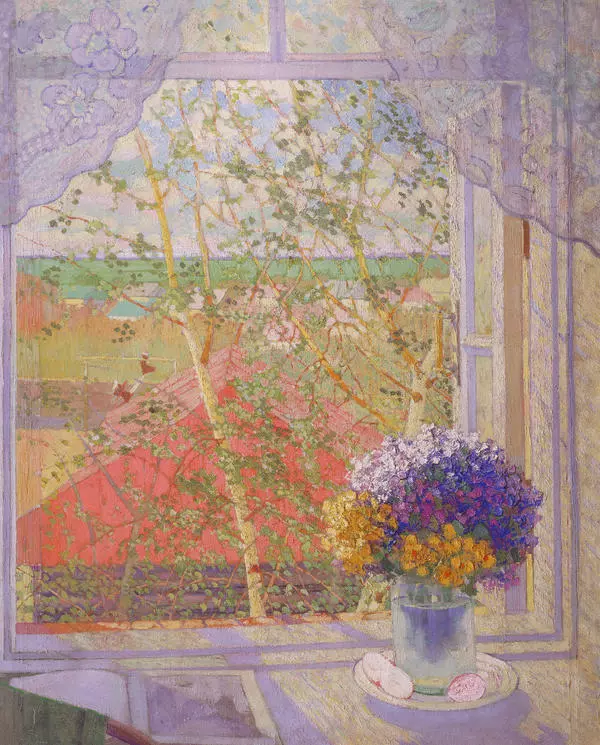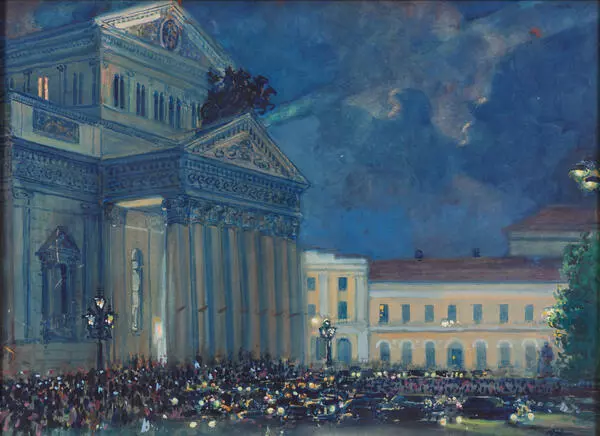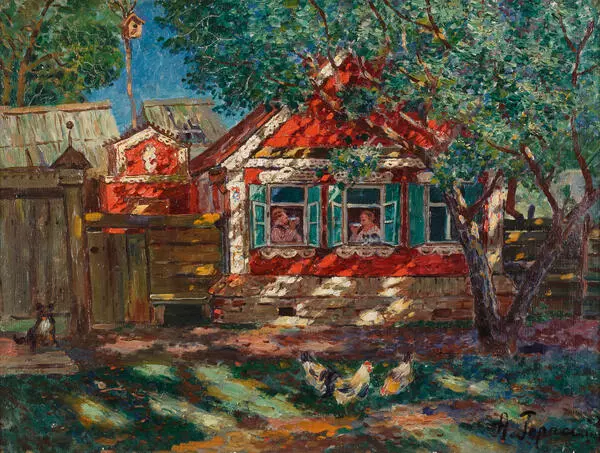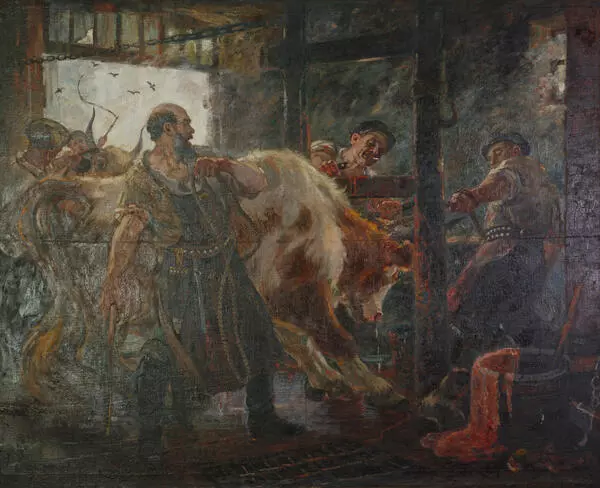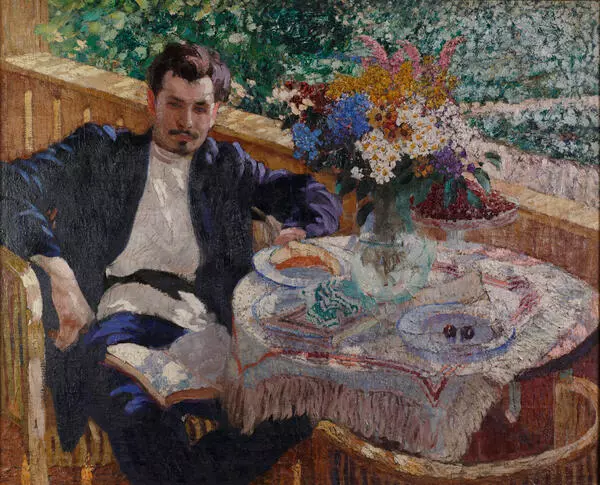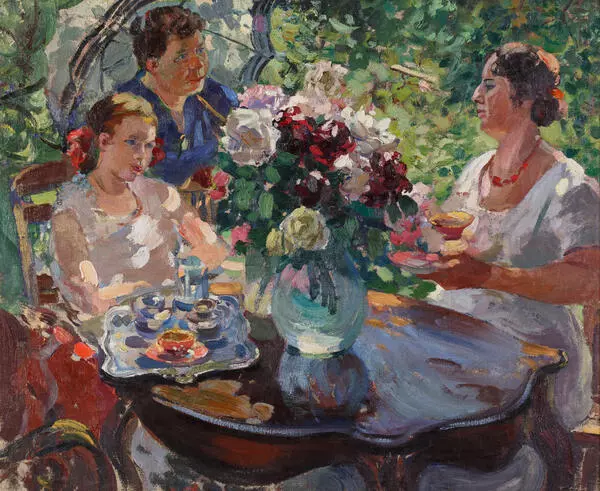Alexander Gerasimov was known to distinguish portrait painting among other genres, and considered it the most challenging task, requiring not only impeccable technical skills but also the ability to delve into the sitter’s personality and capture their character, unique nature and inner world. Creating a gallery of portraits of his outstanding contemporaries, Alexander Mikhailovich Gerasimov did not only portray their appearance — he etched their names into history. Alexander Gerasimov gave the Soviet people and the whole world a generalized image of Vladimir Ilyich Lenin — the leader of the October Revolution and a passionate tribune of the people.
This work remained unfinished, but, even as a sketch, it perfectly conveys the very essence and atmosphere of the depicted event. The central idea of the picture is Lenin and the people. The terrible scene that left the leader wounded shocked all the people, and indeed the whole world. The artist put all the strength of his talent and his sublime inspiration into the work.
The composition of “Shooting at the People” is the last theme-based painting by Alexander Gerasimov. It had taken the artist a long time to approach the work. He had collected documented materials on the circumstances of the most famous assassination attempt against the leader of Soviet Russia, Chairman of the Council of People’s Commissars of the RSFSR Vladimir Lenin on August 30, 1918, on the day of his speech at a meeting of workers. The artist repeatedly visited the site of the vicious assault at the Michelson Plant in Moscow, where he made preliminary sketches and outlined the composition of the future painting. The individual figures of Lenin and the workers supporting him are portrayed with convincing authenticity. The work is full of dynamism, it captures the very moment of action. Lenin’s posture and his emotional gesture look psychologically accurate.
In his autobiographical book “Life of an Artist”, Alexander Mikhailovich wrote, “The realization of the fact that I was working on a painting of a genius of mankind filled me with both profound creative joy and, at the same time, with an immense sense of responsibility. I clearly understood, as I took up the work, that I was to preserve for future generations not only the true appearance of Lenin but also the feelings with which contemporaries perceived the works and life of the great liberator of the working people and the founder of a new era of world history.”
This work remained unfinished, but, even as a sketch, it perfectly conveys the very essence and atmosphere of the depicted event. The central idea of the picture is Lenin and the people. The terrible scene that left the leader wounded shocked all the people, and indeed the whole world. The artist put all the strength of his talent and his sublime inspiration into the work.
The composition of “Shooting at the People” is the last theme-based painting by Alexander Gerasimov. It had taken the artist a long time to approach the work. He had collected documented materials on the circumstances of the most famous assassination attempt against the leader of Soviet Russia, Chairman of the Council of People’s Commissars of the RSFSR Vladimir Lenin on August 30, 1918, on the day of his speech at a meeting of workers. The artist repeatedly visited the site of the vicious assault at the Michelson Plant in Moscow, where he made preliminary sketches and outlined the composition of the future painting. The individual figures of Lenin and the workers supporting him are portrayed with convincing authenticity. The work is full of dynamism, it captures the very moment of action. Lenin’s posture and his emotional gesture look psychologically accurate.
In his autobiographical book “Life of an Artist”, Alexander Mikhailovich wrote, “The realization of the fact that I was working on a painting of a genius of mankind filled me with both profound creative joy and, at the same time, with an immense sense of responsibility. I clearly understood, as I took up the work, that I was to preserve for future generations not only the true appearance of Lenin but also the feelings with which contemporaries perceived the works and life of the great liberator of the working people and the founder of a new era of world history.”

